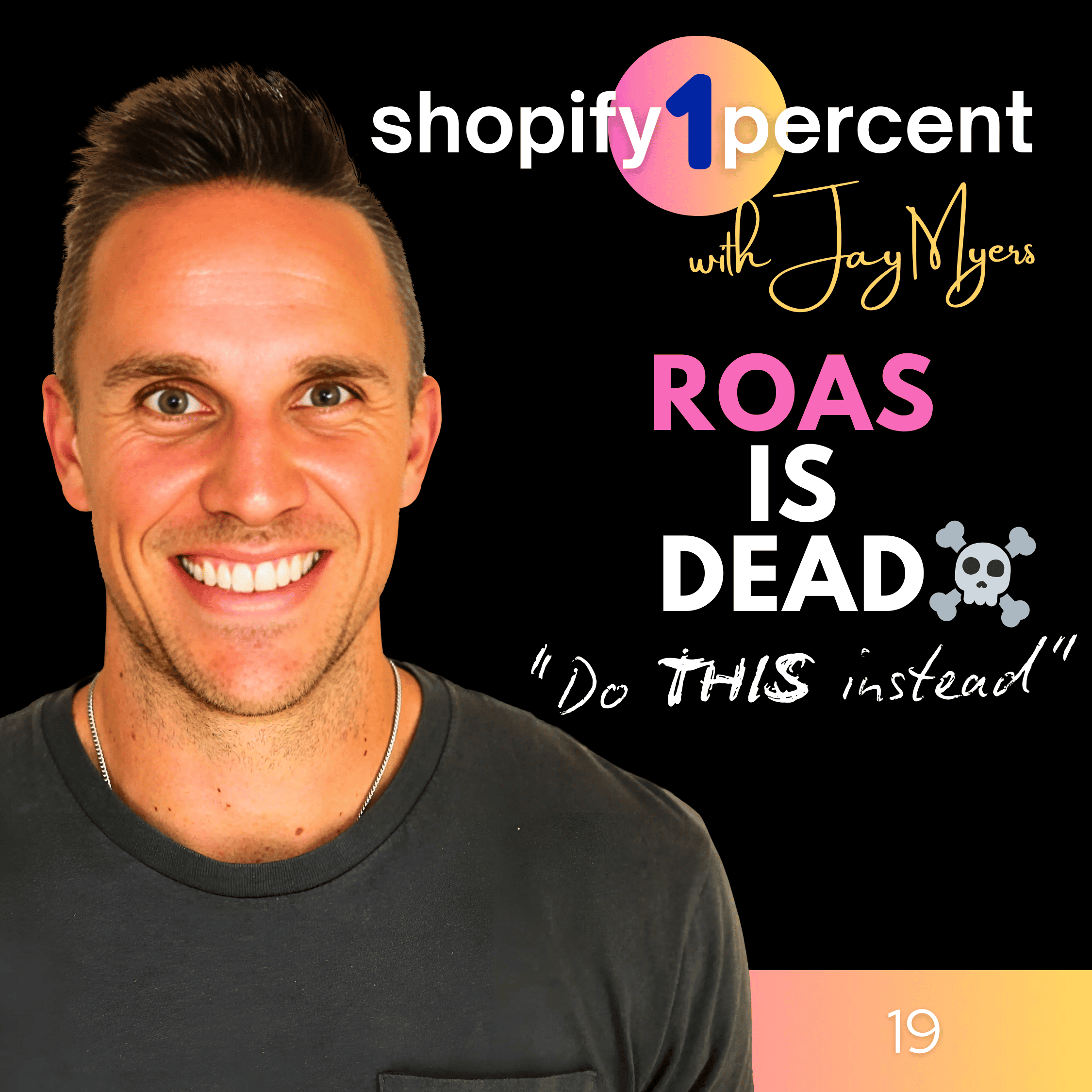ROAS is DEAD ☠️ - Do THIS instead. How Cody Wittick is Helping Shopify Brands 7X Revenue!

Let’s face it: the Shopify growth game today isn’t what it was even two years ago. What used to be “just run some Facebook ads and hope for the best” has become a full-blown science that mixes creative content, deep financial forecasting, and smarter-than-you-think algorithms.
This week, I sat down with Cody Wittick, co-founder of Kyship, an e-commerce growth agency that’s helped brands like Purdy & Figg and Supergut explode their new customer acquisition—772% and 799% respectively. And these aren't random spikes. They also reduced CAC by over 60%. Yes, you read that right.
But Cody didn’t always run a full-stack agency. Back when we first connected, Kynship was hyper-focused on influencer product seeding, literally sending out products for free, no strings attached, and turning that into user-generated content (UGC) gold.
Fast forward to today: Kynship runs full-scale growth operations for Shopify brands, with a model that’s more CFO-meets-Creative Director than the old “throw money at ads and hope” approach.
Here’s a breakdown of the biggest gems from our chat, and how you can apply them to grow your Shopify store faster and smarter.
1. Product Seeding Still Works (But You Need to Do It Right)
Cody’s background is rooted in relationship-based influencer marketing. Their model is simple: send product to influencers with zero expectations, track the ones who post, get usage rights, and turn that UGC into ad creative.
It might sound old school, but when done at scale (and with a proper system) it’s wildly effective. In fact, Kynship often sees 3 out of 10 influencers post organically with zero payment involved.
And when you consider that 92% of consumers trust UGC more than traditional advertising (Nielsen), this kind of seeding strategy starts to look like a no-brainer—especially when you're drowning in rising ad costs.
✅ Actionable tip: Use Kynship’s Shopify app to upload a CSV of influencers and automatically generate zero-dollar draft orders. No more clunky workarounds.
2. The New Ad Game: Systems, Not Services
One of Cody’s most powerful mindset shifts was moving from being a service provider to a system builder.
They don’t just offer paid media, creative, or forecasting in silos. They offer a system that includes:
-
Bottom-up financial forecasting
-
Performance creative generation
-
Channel execution across Meta and Google (plus strategic oversight of others like Amazon)
This approach allows them to be proactive instead of reactive. They’re not optimizing ad campaigns in a vacuum, they’re shaping the business strategy.
🎯 Stat to know: Meta has publicly stated that creative accounts for 56% of sales lift, making it the single most important factor in ad success.
✅ Actionable tip: Stop thinking of agencies as pick-and-choose freelancers. Look for strategic partners who understand your financial goals—and build your creative and ad campaigns backward from those targets.
3. Ditch Product Pages for High-Converting Landing Pages
This one hit home. Cody shared that when Kynship started using Shopify landing page builders like Shogun, they saw up to 2x better conversion rates compared to sending traffic to standard Shopify product pages.
Why? Because landing pages allow for one job and one job only -> conversion. No distractions, no clicking around, no “Let me learn more about your brand first” meandering.
✅ Actionable tip: Build simple landing pages that match your ad creative. Keep the message consistent and the CTA clear. Tools like Shogun make it easy, even if you’re not a designer.
4. Use AMER, Not Just ROAS
Kynship uses a metric they call AMER (Acquisition Marketing Efficiency Ratio), which is essentially blended new customer ROAS.
Why does it matter?
Because platform-specific metrics can lie. A campaign might look weak in Meta’s dashboard, but once you zoom out and measure how many new customers actually bought, you realize it’s performing just fine.
Especially when Meta influences customer behavior across multiple channels—like Amazon or Google—which don’t always get attributed in Meta’s reports.
✅ Actionable tip: Track total new customer revenue across all channels and measure it against your full acquisition spend. This gives you the real picture—not just a platform report card.
5. Go Broad with Targeting and Let Meta Do the Work
You might think you know your ideal customer better than Meta’s algorithm… but you don’t.
Cody’s team almost always uses broad targeting and lets Meta’s machine learning optimize for performance. The more signals you feed it, the better it performs. Plus, overly granular targeting often forces inefficiencies and higher costs.
✅ Actionable tip: Use exclusions to filter out existing customers. But otherwise, go broad and give Meta room to find buyers.
6. Creative Is King. But Offer Is Queen.
Cody reminded me that 60–70% of a winning ad’s performance is creative, but the offer and the landing page close the deal.
Especially for subscription brands on Shopify, first-order profitability isn’t always the goal. If your retention is strong, you can afford to lose a little upfront.
🎯 Stat to know: Shopify stores with subscription models grow 3.7x faster than average DTC stores (Recharge, 2023).
✅ Actionable tip: Match your creative, offer, and landing page tightly, and make sure your LTV model justifies your acquisition strategy.
Final Thoughts
This episode was a masterclass in real-world Shopify growth. No hype, no buzzwords - just battle-tested strategies that drive new customer revenue without killing your bottom line.
Whether you’re at $5M or $50M in revenue, the shift toward system-based scaling and financial forecasting is a competitive edge most brands are still missing.
Big thanks to Cody for dropping wisdom, numbers, and more than one spicy take. If you’re looking for a true growth partner—or just want to try product seeding the right way—check out kynship.co or their Shopify app.
Until next time friends, keep making those 1% improvements every day. 👊











